|
Chapters for Certification
If you are taking our Personalized Project Program (PPP) or Guided Program of Study (GPS) to earn your CFFS, select 5 chapters from the lists below to create your customized course. In addition, we will also assign you 2 general chapters regarding functional food science. (7 chapters total)
Once you have chosen your chapters, please let us know and we will promptly assist you with starting your course.
|
|
|
 |
Volume 1: Introduction to Functional Food Science
- A New Definition for Functional Food by FFC: Creating Functional Food Products Using the New Definition
- Introduction to Functional Foods
- Healthy, Functional, and Medical Foods. Similarities and Differences Between These Categories. Bioactive Food Compounds.
- Functional Food and Biomarkers
- Scientific Standards for Evaluating Functional Food Claims: Regulation, Pre-Clinical and Clinical Studies
- Efficacy and Dose Determination of Bioactive Compounds
- Developing a Suitable Food Vehicle for Bioactive Ingredients
- Relationships Between Bioactive Food Components and Their Health Benefits
- Dietary Fiber
- Soluble Fiber and Prebiotics as Functional Food Components
- Plant Sterols
- Phytochemicals in Disease Preventions and Interventions: A Current View
- Role of Bioactive Peptides and Biofunctional Attributes
- Flavonoids: Sources and Potential Health Benefits
- Fortification of Foods with Micronutrients
- Coronavirus (COVID-19 or 2019-nCoV) Infection: Food and Nutrition Suggestions
- Nature Nuture’s Life: Intervention of Functional Food in the Management of Metabolic Syndrome
- How Can Omega-3 Fatty Acids Prevent and Treat Cancer?
- Philosophy of Functional Food in East and West
- Food-Drug Interactions
- Functional Foods Ingredients Market
|
|
|
|
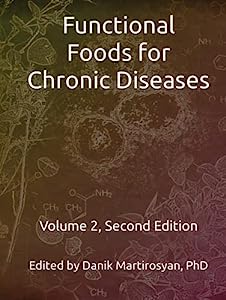 |
Volume 2: Functional Foods for Chronice Diseases
- Epidemiology of Cardiovascular Disease
- Biomarkers of Different Cardiovascular Diseases
- Functional and Bioactive Lipid Mediators in Modulating CVD Precursors
- The Effects of Functional Food and Bioactive Compounds on Biomarkers of Cardiovascular Diseases
- Virgin Olive Oil Improves Semen Quality Altered by Hypercholesterolemic Diets in Rabbits
- Functional Food and Cancer
- Functional Food Compounds in Cancer Disease
- Plants and Plant-based Products Against Cancer
- The Cytotoxic and Anti-Proliferative Activity of High Molecular Weight Pectin and Modified Citrus Pectin
- Functional Food in Cancer and Awareness of Chemotherapy and Functional Food Interaction
- Functional Foods and Obesity
- Biomarkers and Bioactive Compounds for Obesity
- Epidemiology of Diabetes
- Functional Foods for Type 2 Diabetes
- Psychology and Dietetics: Improvement of Cognitive Function in Obesity Using an Appropriate Diet in the Context of Psychodietetics
- Active Principles in Functional Foods with Antianxiety and Antidepressant Effects
- Application of Enzymes in Processing of Functional Food and Nutraceuticals
- Coffee Silverskin Extract for Aging and Chronic Diseases
- Health Claims and Functional Food: The Future of Functional Foods Under FDA and EFSA Regulation
|
|
|
|
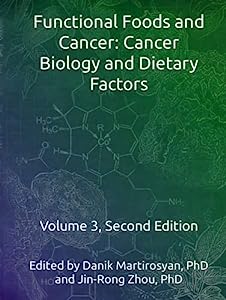 |
Volume 3: Functional Foods and Cancer: Cancer Biology and Dietary Factors
- Nutrition and Cancer: Science and Practice
- Diterary Factors which may Reduce the Risk of Cancer
- Dietary Factors which may Increase the Risk of Cancer
- Common Foods and Functional Foods: Their Association With Cancer
- Environmental Effects on Food and Cancer
- Functional Foods Enhancing Immunity
- Anticancer Effects of Green Tea (Camellia sinensis)
- Cancer Biomarkers: Strategies for Early Diagnosis
|
|
|
|
 |
Volume 4: Functional Foods and Cancer: Bioactive Compounds and Cancer
- Bioactive Functional Foods for Cancer
- The Effects of Bioactive Compounds on Biomarkers of Cancer
- Effects of Different Bioactive Compounds on Cancer
- Bioactivity of Nano-sized Nutraceuticals Against Cancer
- Potential of Phyto-Chemotherapeutic Agents and its Nanoparticles
- Phytocannabinoids and Breast Cancer: A Systematic Review
- Isoflavones and Its Preventive Roles on Breast and Prostate Cancer
- Flavonolignans to Prevent Cancer: A Role for Silymarin and Derivatives
- Bioactive Compounds: Their Role in Functional Food and Human Health, Classifications, and Definitions
- Functional Food for the Prevention and Management of Cancer
- The Rational Drug Design to Treat Cancers: Bioactive Compound Aziridine Quinone
|
|
|
|
 |
Volume 5: Functional Foods in Integrative Oncology
- Cancer therapy: Targeting epigenome by dietary phytomedicines
- Role of prebiotics and probiotics in therapy of gut cancer
- Effects of Fermented Dairy Products against Cancer, Pathogens and Other Health Issues
- Phytochemicals and Herbal Medicine in Oncology
- Medicinal Mushrooms for Cancer: Science and Practice
- Major cancers and functional foods
- Research and Development of Functional Foods for Specific Type of Cancer
- Nutrigenomics: Implications for Cancer Prevention
- Nutrigenomics and Cancer Prevention
- Therapeutic and Preventive Potential Of Functional Foods Specific to Cancer Prakash
- Burgeoning Application of Natural Product Based Anticancer Agents in Oncology Arem
- An Update on Molecular Targets of Spices Based Dietary Agents for Prevention and Therapy of Malignancies
|
|
|
|
 |
Volume 6: Basic Principles of Functional Food Science
- Bioactive Compounds: Their Role in Functional Food and Human Health, Classifications, and Definitions
- Introduction to Functional Foods
- Healthy, Functional, and Medical Foods. Similarities and Differences between these Categories. Bioactive Food Compounds
- Vitamin C: optimal dosages, supplementation and use in disease prevention
- Fortification of Foods with Micronutrients
- Functional Food Ingredients Market
- Sensory Evaluation of Functional Foods
- Biotechnology and Functional Food
- Classification of “Healthy” Food by Quantification of Nutrient Content based on Functional and Therapeutic Effect on Human Health
- FFC’s Advancement of Functional Food Definition
- Functional Food Center’s Vision on Functional Food Definition and Science in Comparison to FDA’s Health Claim Authorization and Japan’s Foods for Specified Health Uses
- FFC’s Advancement of the Establishment of Functional Food Science
|
|
|
|
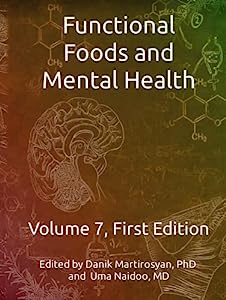 |
Volume 7: Functional Foods and Mental Health
- The Effects of Natural vs. Processed Foods on Mental Health
- The Impact of Anti-Inflammatory Foods on Mental Health
- The Role of Nutraceuticals in Preventing and Managing Mental Disorders
- The Effects of Prebiotics and Probiotics on Mental Disorders
- Bioactive Compounds in Fermented Foods and the Management of Depression and Anxiety
- Interplay Between Probiotics, Depression, and Dementia
- The Effects of Bioactive Compounds in Spices and Seeds on Dementia and Depression
- Polyphenols as Neuroprotective Agents Which Contribute to the Reduction of Anxiety and the Management of Depression
- The Effects of Bioactive Compounds in Spices and Seeds on Alzheimer’s
- Plant Derived Bioactive Compounds for the Management of Age Associated Alzheimer’s Disease
- Update on the Neuroprotective Effects of Curcumin and Curcuminoids Against Alzheimer’s Disease
- The Effects of Bioactive Compounds Found in Spices and Seeds Against Alzheimer’s Disease
- The Effect of Gluten- and Casein-Free Diets on the Symptoms of Autism
- Functional Food and Nutrition for the Management of Autism Spectrum Disorders and Schizophrenia
- The Potential Clinical Relevance of Amazonian Fruits and Seeds and their Bioactive Compounds on Psychiatric Disorders and Neuropathologies
- Bioactive Compounds and the Management of Bipolar Disorder and Mania
- Therapeutic Perspectives of Antihistamines in Management of Asthma
- The Therapeutic and Preventive Roles of Both Lipid and Water-Soluble Carotenoids in Neurodegenerative Diseases
- Malnutrition and Bipolar Disorder: The Role of Functional Food to Manage Bipolar Disorder
|
|
|
|
 |
Volume 8: Functional Foods and Viral Diseases
- Enhancing the Elderly’s Immune System for Healthy Aging, to Fight Chronic and Viral Disease Including Covid-19
- Phytochemicals of Panax Ginseng Root and Their Antiviral Activity
- Probiotics and Prebiotics in the Prevention and Treatment of COVID-19
- A Computational Effort to Deciphering Putative COVID-19 3C-like Protease Binders in the Selected Recipes of Kurdish Ethnomedicine: An Approach to Find an Antiviral Functional Tea
- Nutritional Support: Another Treatment for Fighting COVID-19
- Can Some Micronutrients Stimulate the Immune System in the Prevention of COVID-19 and Be Included in the Nutritional Management of Elderly People Affected by the Virus?
- Polyphenolic Compounds: An Effective Biomolecule for the Enhancement of the Immune System and the Management of Coronaviruses
- Nutrients in Prevention and Maintenance of COVID-19 and Other Viral Diseases
- Antiviral and Immunostimulant Activities of Protein Value Chains from Residual Biomas
- The Efficacy of Probiotics on Coronaviruses
- Dietary Deficiencies Exacerbate Disparity in COVID-19 Infection and Nutrition Recommendations for Vulnerable Populations
- Functional Foods: An Alternative Source to Combat Viral Infection, Including COVID-19
- Returning to Work, School, and Stores and Preparing for a Second Wave of COVID-19
|
|
|
|
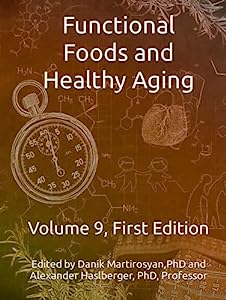 |
Volume 9: Functional Foods and Healthy Aging
- Psychobiotics and Thanatophobia: A Psychoneuroimmunological Insight into Microbe-Mind Modification
- Role of Omega-3 Fatty Acids in Healthy Aging
- Emergence of New Era of Evidence for Functional Foods or Bioactive Compounds as Perspective Natural Immunomodulators for Preventative Therapeutics in Older Adults
- Functional Properties of Kefir and Healthy Human Aging
- Obesity in Older Adults
- Macronutrients for Older Adults
- Epigenetically Active Nutraceuiticals to Address Personal Molecular Mechanisms of Aging
- The Microbiota-Gut-Brain Axis and Parkinson’s Disease
- Contribution of Dietary Spices to Human Health, Wellness, and Longevity
|
|
|
|
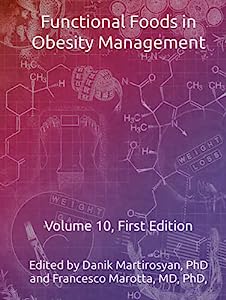 |
Volume 10: Functional Foods in Obesity Management
- Recent advances in nutraceuticals and functional foods to treat obesity-associated non-alcoholic fatty liver disease
- How green tea catechins exert an anti-obesity effect
- Polyphenolic compounds in green tea and their effect on obesity
- Flavonoid rich tea and its associated health benefits
- The molecular mechanisms behind the anti-obesity effects of phenolic compounds
- The role of bioactive food ingredients in the prevention/alleviation of metabolic syndrome
- How bioactive compounds affect the gut microbiota among people with obesity
- The role of gut microbiota as a component of the intestinal epithelial barrier
- Diversity of microbial species in the gut with changes in diet and bioactive compounds
- Bifidobacterium Supplementation in Very Preterm Infants Prevents DOHaD-Related Conditions by Producing Favorable Gut Microbiota
- The Role of Bioactive Compounds on Mitigating Negative Health Effects of Obesity and COVID-19
- The importance of probiotics, prebiotics, synbiotic, and postbiotics on gut microbiota, intestinal barrier function, and obesity
- How Berry Anthocyanin Supplementation Counteracts High- Fat Induced Obesity?
|
|
|
|
 |
Volume 11: Bioactive Food Ingredients in Inflammation and Obesity Management
- Prevention of obesity, chronic diseases, and increased healthy longevity with the Mediterranean Diet
- The Role of Prebiotics and Probiotics in the Intestinal Barrier Function
- The Anti-Obesogenic Effects of Prebiotics and Probiotics
- Intestinal Barrier Integrity Through the Use of Prebiotics and Probiotics
- Intestinal Barrier Structure in Response to Stressors
- The Mechanism of Bioactive Peptides to Control Obesity Related Inflammation
- How food-derived Bioactive Peptides Fight Inflammation and Manage Obesity
- Fish oil derived omega-3 fatty acids on the downregulation of inflammatory biomarkers
- How antioxidant enriched foods fight oxidative stress induced by obesity
- The Effect of Dietary Phytochemicals on Adipose Tissue Growth
- Food Supplements and Beneficial Effects in Obesity
- Capsaicinoids (and Its Analogs) Contribution to Body Fat Reduction
- The role that Ferulic acid found in coffee has on visceral fat accumulation and glucose
- Polyphenols and Health Benefits in Obesity
|
|
|
|
|